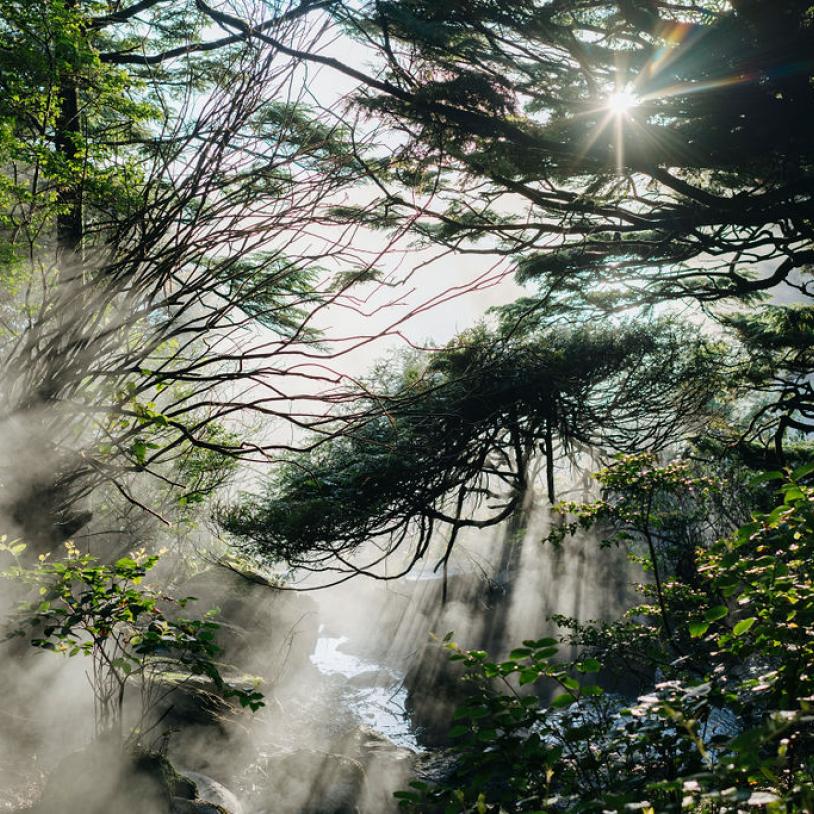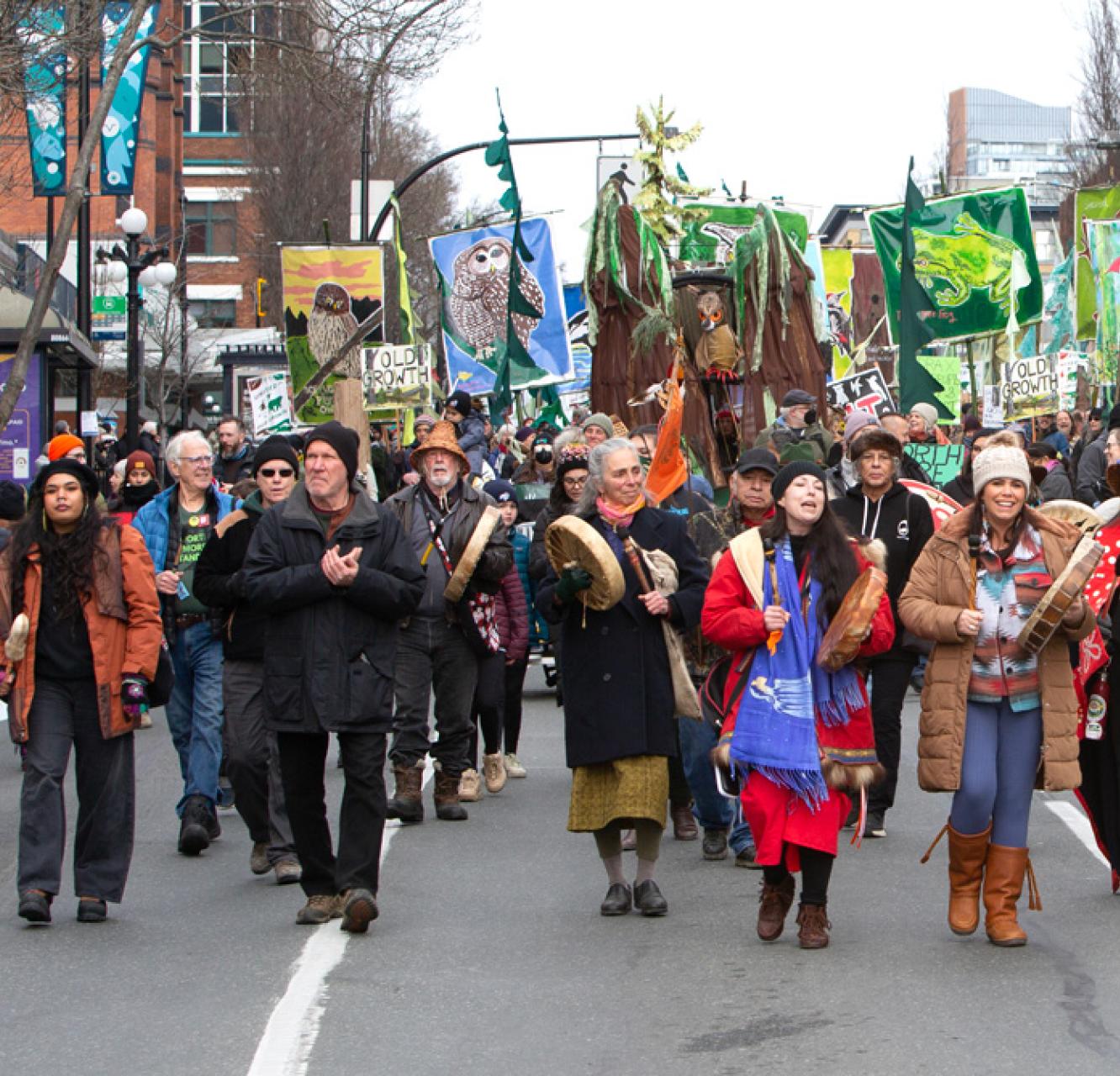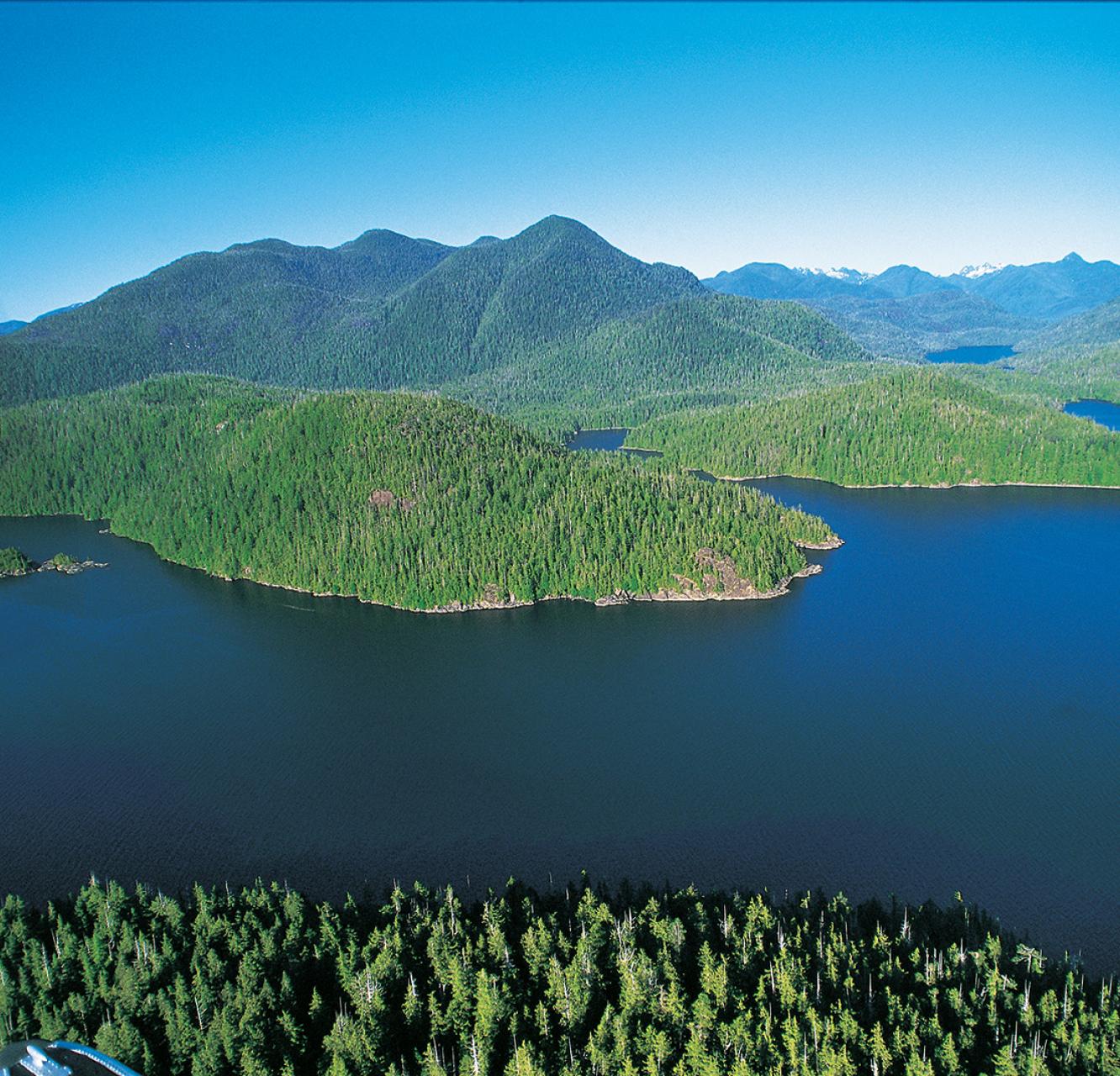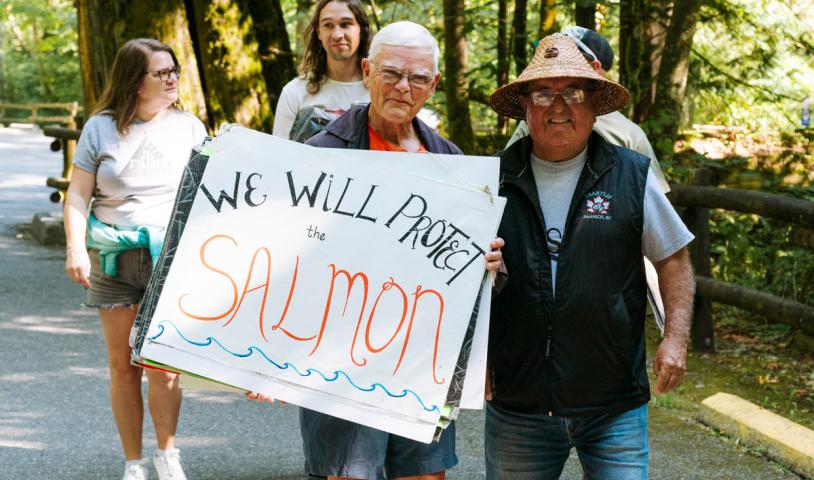Vancouver Island’s remaining old‑growth a disappearing treasure
Friday, December 13, 2013
The Vancouver Observer
By Torrance Coste
December 12, 2013
A few months ago I was visiting family and friends in the south Cowichan Valley on Vancouver Island. Someone suggested a hike, and then we argued, as we always do, about where to go.
“Mt. Baldy has the best view.”
“If we do the quarry, the dogs can swim.”
“How about Mt. Prevost?” someone suggested. “Too many mountain bikers,” the rest of us replied.
I suggested the Koksilah River Grove, and we had a winner.
Located behind Shawnigan Lake, the Koksilah Grove is one of the best stands of old-growth Douglas-fir left anywhere, and is relatively accessible. Surprisingly, a few of the guys had never been there, so we packed up and headed out.
Along the way, we chatted and joked around, but when the trail turned and we walked between the first of the giants, the mood instantly changed. All conversation stopped, and everyone wandered around, staring upwards, feeling the awe that only an old-growth forest can inspire. I even caught a couple of them with their mouths wide open.
Watching my friends, I was reminded of famous world wonders that I’ve been lucky enough to see, like Machu Picchu or Niagara Falls. And that struck me as weird, because these weren’t tourists I was with – they weren’t visitors from faraway, less-forested places – they were all locals who grew up in the coastal temperate rainforest.

Two old-growth Douglas-firs in the Koksilah River Grove (Photo: Ty Jones)
For me, this highlighted the state of forest management here on Vancouver Island. Ancient forests once covered almost the entire Island, but now a small stand of old-growth was as foreign and unfamiliar to some of my friends as the Eiffel Tower, Mount Everest, or the Pyramids of Giza.
Island-wide, over 90 per cent of the low-elevation forests – which contain the biggest trees and the most biomass – have been logged. Some ecosystems have been hit even harder. Old-growth in the Coastal Douglas-fir (CDF) zone has been reduced to just one per cent of its former range. On crown land, the area of remaining old-growth Douglas-fir is smaller than Vancouver’s Stanley Park.
The situation in the CDF zone is so dire that the Wilderness Committee has a challenge before the Supreme Court against the Province of BC. Partnered with ForestEthics Solutions and represented by Ecojustice, we’re asserting that by not implementing a conservation plan for remaining old-growth within the CDF zone, the Ministry of Environment is violating its own laws pertaining to endangered ecosystems. The hearing is currently postponed.

Clearcut with heavy erosion near the Koksilah River (Photo: Ty Jones)
While the utter failures of forest management are perhaps most obvious in the CDF zone, they are by no means limited to this ecosystem. All of Vancouver Island’s forests have been reduced to tiny fractions of their former range; true high quality old-growth exists only in small, fragmented pockets. With the exception of Clayoquot Sound, there are hardly any intact valleys (watersheds in which no industrial logging has ever taken place) left on the Island.
Yet we continue to log in the last few stands of old-growth. Claims from industry and government about responsible forest stewardship have created the perception that old-growth logging is a thing of the past, but nothing could be further from the truth.
On a visit to the legendary Walbran Valley earlier this year, I discovered new clearcuts in an old-growth stand on crown land, near the unprotected Castle Grove. This area features some of the largest red cedar trees anywhere on the coast, surrounded now by fields of three-metre wide stumps.
On private land, which comprises about a third of Vancouver Island, things are even worse. Island Timberlands, one of the industrial logging giants operating here, has been in news headlines throughout the fall over its contentious plans to clearcut on the edge of Cathedral Grove (MacMillan Provincial Park), one of the Island’s most beloved and well-known old-growth forests. The company has also clearcut or has plans to clearcut in old-growth on Cortes Island, McLaughlin Ridge, Labour Day Lake, and several other areas.
The value of standing old-growth forest simply cannot be understated. These forests host extraordinary biodiversity and provide habitat to rare species – some that are found nowhere else on earth. They provide resources and medicines to the local First Nations who stewarded these forests for thousands of years before European contact. They provide endless recreational opportunities, and are a critical attribute of Vancouver Island’s sustainable tourism industry.
Old-growth forests also store massive amounts of carbon, and the destruction of forests on BC’s coast is a significant (but uncounted) source of carbon dioxide emissions for the province. Keeping this carbon out of the atmosphere by conserving the remaining old-growth forests is a huge step we can take to limit our contribution to climate change, the environmental catastrophe of our lifetimes.
And while status quo industrial logging has destroyed the ecological integrity of most of Vancouver Island’s forests, it now brings less economic benefit to local communities than ever before. More mills are closing, more logs are exported raw, and in the last decade, under unprecedented deregulation of both public and private forest lands, forestry jobs have disappeared by the thousands and industry revenues are in perpetual freefall.
As has most large-scale economic development on BC’s coast, industrial logging has largely excluded Vancouver Island’s original inhabitants. The First Nations on the Island, who are the only societies that used timber products on a sustainable basis here, haven’t received long-term benefits from logging in their traditional territories. In many cases, logging plans are made without consulting First Nations communities. Some Nations have launched successful court cases; perhaps the most notable being the 1984 Supreme Court challenge by the Ahousaht and Tla-o-qui-aht First Nations that stopped MacMillan Bloedel from clearcutting Meares Island in Clayoquot Sound. Others have seen the valleys and hillsides in their territories stripped of old-growth altogether.
Classic hillside clear-cutting in the Walbran Valley (Photo: Torrance Coste)
In the last few decades, it has become crystal clear that the current logging model is not working. It’s not a “jobs vs environment” argument – if we continue on the path we’re on, there won’t be forestry jobs or old-growth forests on Vancouver Island, apart from the few stands within protected areas.
The frustrating part is that there are other models out there. Looking east, Quebec and Ontario do a far better job adding value to forest products than we do in BC. The forest industries there create more jobs, revenue, and community benefits, and cut less wood. To create one full-time job, Ontario’s forest industry harvests 205 cubic metres of timber per year (one cubic metre equals one telephone pole). To create the same job in BC, our forest industry must cut 1189 cubic metres – almost six times more wood.
Vancouver Island is home to several eco-forestry demonstration sites that encourage lower cut rates, the prioritization of value-added products, and the conservation of old-growth. Community forests, which strive to meet local needs first instead of maximizing corporate profits, are another good alternative. The newest community forest tenure is on Cortes Island, and is co-owned by the local community and the Klahoose First Nation.
In Clayoquot Sound, the Tla-o-qui-aht First Nation has declared four Tribal Parks within its territory. Tribal Parks management prioritizes responsible forestry in second growth, protection of old-growth for future generations, and the fostering of sustainable livelihoods in the region.
Blue-listed Red-legged Frog in the Castle Grove, Walbran Valley (Photo: Torrance Coste)
New ideas and models like these are the only future for forestry on Vancouver Island.
Stands of old-growth – be it Douglas-fir, red cedar, or any other forest type – have become exceptionally rare. As I was reminded a few months ago, they’ve become a novelty, even for locals who grew up on the Island. The few pockets that have so far managed to escape the chainsaw must be respected as the ecological gems that they are.
We need to start seeing these forests for their full value: the habitat they create, the carbon they store, the cultural and recreational opportunities they provide. Looking at them solely in terms of their dollar value – which is decreasing – is archaic and uncreative. It is high time for a ban on old-growth logging. The way things are going in Vancouver Island’s forests, this could be our last chance.








